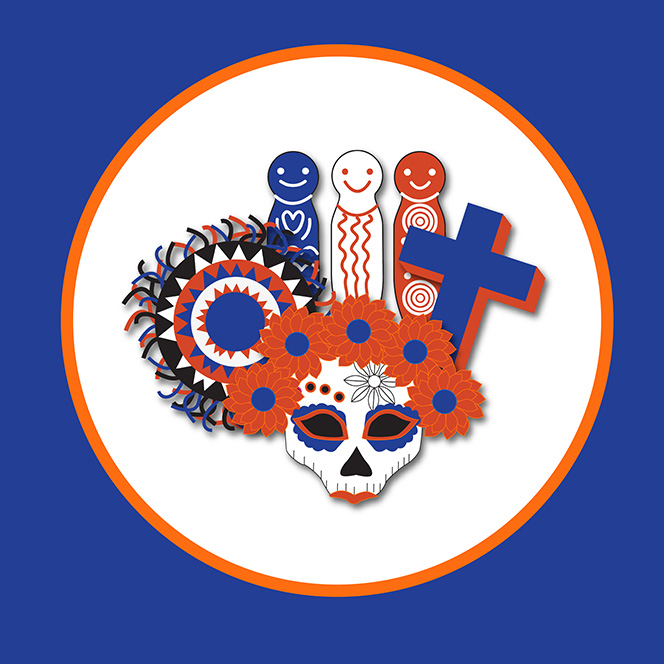
- This event has passed.
Honoring the Dead in the Hispanic World
Thursday, Nov. 2, 2023 @ 10:00 am - 12:00 pm MDT
Event Navigation

Monday, Oct. 23, 1 – 3 p.m.
Tuesday- Friday, Oct. 24 – 27, 10 a.m. – 12 p.m.
Monday, Oct. 30, 3 – 5 p.m.
Tuesday- Friday, Oct. 31 – Nov. 3, 10 a.m. – 12 p.m.
Stein Luminary in the Center for Visual Arts Atrium
1110 S. Capitol Blvd.
Exhibición digital interactiva en el Keith and Catherine Stein Luminary, junto al Atrio en el Centro de Artes Visuales, 1110 S. Capitol Blvd. Lunes, Oct. 23, 1-3 p.m.; Martes- Viernes, Oct. 24-27, 10 a.m. – 12 p.m.; Lunes, Oct. 30, 3-5 p.m.; Martes- Viernes, Oct. 31- Nov. 3, 10 a.m. – 12 p.m.
Join the Department of World Languages, Project Scientia and the School of the Arts for a digital interactive exhibit that explores various ways the dead are memorialized in November across the Hispanic world.
El Departamento de Lenguas y la Escuela de Artes se complacen en invitarle a una exposición digital interactiva que explora las diferentes formas en que se recuerda a los difuntos en noviembre en el mundo hispano.
An Interactive Digital Exhibition
In the Hispanic world, how we honor our deceased relatives around Nov. 1 and 2 depends on the family, community and country, as well as the influences of indigenous practices, Catholic traditions and even Celtic rites. The celebration has various names: “All Saints’ Day,” “Day of the Dead,” “All Souls’ Day” and “Samain” among them. Some countries and communities celebrate in intimate and quiet ways, while others are festive and full of music and noise.
Food plays an important part at all celebrations where families and communities gather. In this exhibition, you will learn about typical treats and their recipes, the features of celebrations in Hispanic countries and the U.S., and other distinctive, localized traditions found in Latino communities around the world.
Exposición digital interactiva
En el mundo hispano, la forma en que honramos a nuestros familiares fallecidos alrededor del 1 y 2 de noviembre depende de la familia, la comunidad y el país, así como de las influencias de prácticas indígenas, tradiciones católicas e incluso ritos celtas. La celebración se denomina de diversas maneras: “Día de Todos los Santos,” “Día de los Muertos,” “Día de los Difuntos”, “Samaín,” etc. Algunos países y comunidades celebran de manera íntima y recogida, mientras que otros son festivos, con música y bulla.
La comida juega un papel importante en todas las celebraciones donde se reúnen familias y comunidades. En esta exposición, aprenderá sobre algunas comidas típicas y sus recetas, las características de las celebraciones en los países hispanos y los Estados Unidos, y otras tradiciones auténticas y autóctonas que se encuentran en las comunidades latinas de todo el mundo.
Project Personnel
- Project Manager / Director del proyecto: Manuel Gómez-Navarro, (mgomez@boisestate.edu), adjunct instructor of Spanish, Department of World Languages
- Interim Director, Stein Luminary: Lisa Hunt, PhD (lhunt@boisestate.edu), visiting assistant professor, School of the Arts
- Project Scientia Project Manager / Directora del proyecto Project Scientia: Carolina Viera, PhD (carolinaviera@boisestate.edu), associate professor of Spanish, Department of World Languages.
- The Boise State School of the Arts Grant Initiative sponsored this event.
Please visit the Stein Luminary website or contact luminary@boisestate.edu for more information.